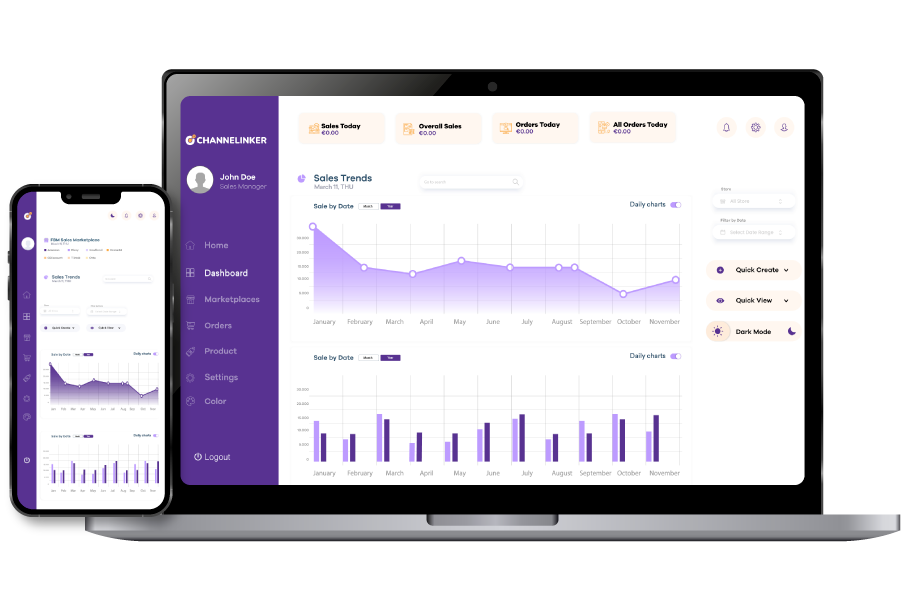What Is MRR (Monthly Recurring Revenue)?

What is Recurring Revenue?
Recurring revenue refers to the consistent and predictable income a business generates over a defined period, typically monthly or annually. Unlike one-time revenue from standalone product sales or services, recurring revenue comes from customers who commit to ongoing subscriptions or memberships. This model provides financial stability, enhances cash flow predictability, and facilitates long-term planning.
Examples of recurring revenue streams include:
- Subscription services such as streaming platforms (e.g., Netflix, Spotify).
- Membership-based models like gyms or coworking spaces.
- Software-as-a-Service (SaaS) companies offering cloud-based tools and platforms.
Recurring revenue ensures a business’s income is not solely reliant on continuous new sales. Instead, it builds a foundation for sustained growth and scalability.
What is MRR?
Monthly Recurring Revenue (MRR) is a key financial metric used to track the predictable monthly income a business earns from its recurring revenue streams. MRR consolidates various subscription terms (monthly, quarterly, annual) into a standardized monthly figure, providing a clear picture of a company’s revenue health and performance.
For example, if a SaaS business has:
- 50 customers on a $20/month plan ($1,000 MRR).
- 30 customers on a $50/month plan ($1,500 MRR).
The total MRR is $2,500. Additionally, MRR excludes irregular income sources such as one-time fees, ensuring it reflects only consistent and predictable revenue.
MRR is foundational for subscription-based businesses as it offers an accurate snapshot of their revenue performance and growth trajectory.
Why Tracking MRR is Important
Tracking MRR is essential for businesses with recurring revenue models for several reasons:
- Revenue Forecasting:
- MRR provides a clear and predictable baseline for projecting future revenue.
- It simplifies budgeting, operational planning, and strategic investments.
- Performance Measurement:
- Businesses can gauge their monthly revenue growth or contraction through MRR trends.
- Positive MRR growth reflects successful acquisition and retention strategies.
- Investor Confidence:
- A steady or growing MRR signals financial health and scalability, attracting potential investors and stakeholders.
- Customer Retention Insights:
- MRR highlights customer behavior, such as upgrades, downgrades, or cancellations, allowing businesses to address churn proactively.
- Strategic Decision-Making:
- Insights from MRR trends help refine pricing strategies, marketing campaigns, and product development initiatives.
How to Calculate MRR
The basic formula for calculating MRR is straightforward:
MRR = Number of Customers x Average Revenue Per User (ARPU)
Example Calculation: If a company has:
- 200 customers paying $30/month, the MRR is $6,000.
- 50 customers paying $50/month, the MRR is $2,500.
The total MRR is $8,500.
Annual Subscriptions: For annual subscriptions, divide the total contract value by 12 to determine its monthly contribution. For instance, a $1,200 annual subscription adds $100 to MRR.
Factors to Include in MRR Calculations:
- New subscriptions.
- Revenue from upgrades or add-ons.
- Adjustments for discounts or promotional pricing.
Common Mistakes in Calculating MRR
Avoiding errors in MRR calculations is crucial for accurate financial insights. Common mistakes include:
- Including Non-Recurring Revenue:
- One-time fees, setup charges, or consulting services should be excluded as they do not contribute to recurring income.
- Overlooking Discounts and Promotions:
- Use the actual amount paid by customers after discounts rather than the full price.
- Misclassifying Billing Cycles:
- Ensure annual or quarterly subscription values are appropriately divided into monthly equivalents.
- Neglecting Churn and Contractions:
- Failing to account for cancellations, downgrades, or lost customers can lead to inflated MRR figures.
- Not Updating Regularly:
- MRR should be recalculated periodically to reflect the latest subscription data.
Five Types of MRR
Breaking MRR into categories provides deeper insights into revenue dynamics:
- New MRR:
- Revenue generated from new customer acquisitions during a given period.
- Expansion MRR:
- Additional revenue from existing customers upgrading their subscriptions or purchasing add-ons.
- Contraction MRR:
- Revenue lost due to customers downgrading their subscription plans.
- Churned MRR:
- Revenue lost from customers canceling their subscriptions entirely.
- Reactivation MRR:
- Revenue recovered from former customers resubscribing to the service.
How to Use MRR Calculations
Businesses can leverage MRR calculations for various purposes:
- Revenue Growth Analysis:
- Monitor growth rates over time to assess the success of customer acquisition and retention efforts.
- Budgeting and Planning:
- Use MRR to align budgets with revenue forecasts and operational needs.
- Identifying Revenue Gaps:
- Spot trends like increasing churn or declining new MRR to address underlying issues.
- Setting KPIs:
- Establish MRR-related performance targets for sales, marketing, and customer success teams.
What is a Good MRR Growth Rate?
A “good” MRR growth rate depends on the company’s size, industry, and maturity stage. General benchmarks include:
- Early-Stage Startups: Aim for 10-20% monthly MRR growth.
- Scaling Companies: Consistent growth of 5-10% per month is considered strong.
- Mature Businesses: A steady growth rate of 1-5% per month indicates sustainability.
Sustained growth, even at smaller percentages, is more valuable than rapid but inconsistent spikes.
Metrics to Use with MRR
Combine MRR with other metrics for a comprehensive financial overview:
- Customer Acquisition Cost (CAC): Measures the average expense of acquiring a new customer.
- Customer Lifetime Value (CLTV): Estimates the total revenue a customer will generate throughout their lifecycle.
- Churn Rate: Tracks the percentage of customers who cancel their subscriptions within a given period.
- ARR (Annual Recurring Revenue): Provides a long-term perspective by annualizing MRR.
- Net Revenue Retention (NRR): Indicates overall revenue growth from existing customers, factoring in upgrades, downgrades, and churn.
What MRR Doesn’t Measure
While MRR is invaluable, it has limitations:
- Profitability: MRR reflects revenue, not profitability. High MRR doesn’t guarantee positive net income.
- Customer Retention Issues: It doesn’t directly highlight retention challenges unless paired with churn metrics.
- Variable Costs: MRR doesn’t account for expenses like marketing, production, or customer support.
- One-Time Revenue: It excludes non-recurring income, which may still impact overall financial performance.
Ways to Grow Your MRR
- Customer Retention:
- Invest in excellent customer support and proactive engagement to reduce churn.
- Upselling and Cross-Selling:
- Encourage existing customers to upgrade plans or purchase add-ons.
- Attracting New Customers:
- Optimize marketing and sales strategies to acquire more subscribers.
- Reactivating Lost Customers:
- Implement targeted campaigns to win back former subscribers.
- Refining Pricing Strategies:
- Regularly review and adjust pricing to reflect value and market demand.
MRR FAQs
- What is the difference between ARR and MRR?
- ARR (Annual Recurring Revenue) is the annualized version of MRR. If MRR is $10,000, ARR is $120,000 ($10,000 x 12).
- How do you calculate monthly recurring revenue in SaaS?
- Sum the monthly revenue from all active subscriptions, ensuring annual plans are divided by 12.
- Is MRR recognized revenue?
- No, MRR represents expected recurring revenue, not revenue already recognized in financial statements.


